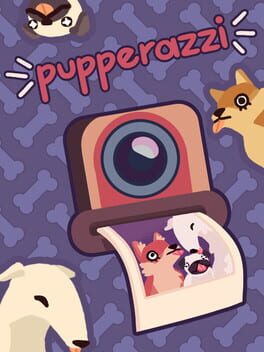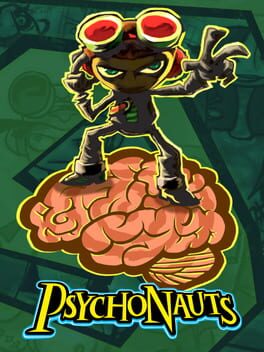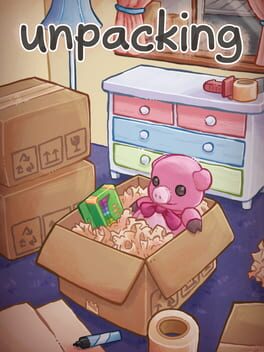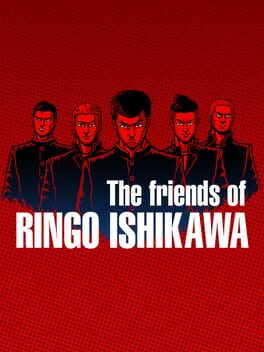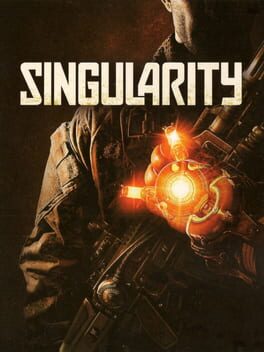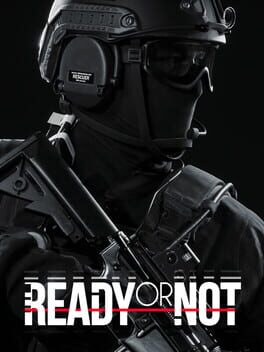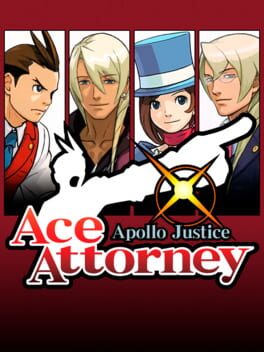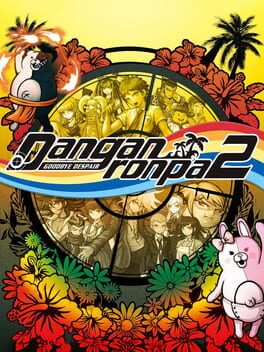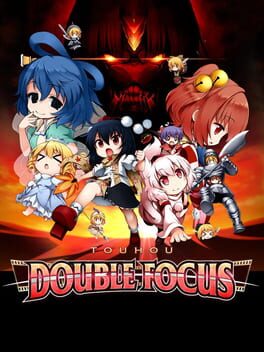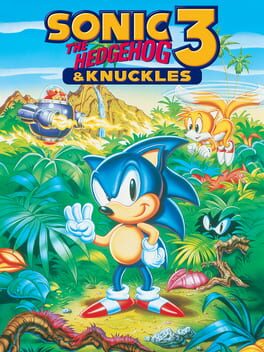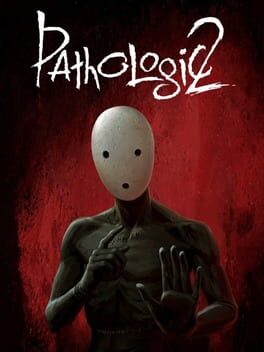Cakewalking
673 Reviews liked by Cakewalking
Pupperazzi
2022
Taking pictures is one of the more finnicky mechanics in many games. Having the game fail to register something can be frustrating, but for the most part it's never too big a deal.
In pupperazzi, the entire game is based around the premise of taking pictures of dogs, meaning the mechanics of the picture taking must work the majority of the time. Of course, this isn't the case at all. The games detection system seems wonky at best as taking pictures of a dog directly in the centre of the camera head on will sometimes result in the fake comments asking what dog is supposed to be the focus. The quests are similarly arbitrary with several of them not registering the dog properly despite the conditions being met.
There are essentially no extra features to grab your interest outside of taking pictures of dogs. The appeal only lasts for a very short amount of time before the game gets far too dull to continue playing.
The aesthetics are fine. However there's a strange lag that appears frequently despite the graphics being very unremarkable. Dogs and other elements having the absolute bare minimum animation, mostly consisting of the static models stretching & squashing a bit as they move.
The written text is nauseatingly "soft" "uwu" "pupper" type dialogue that made me roll my eyes to the point it hurt several times. The gimmick gets old immediately and only results in frustration at best.
Possibly the most shocking to me was that the UI design is absolutely horrific. Poorly explained and implemented. I was struggling for a good few minutes on how to even deliver on quests at all. The other menus are lacking too. No button remapping in any capacity, no real graphics settings, and the only other notable option being a setting to turn off moving cars.
Don't buy the game, don't even give it a chance on gamepass. There are far better things you can do with your time than waste it on something as dull as pupperazzi.
In pupperazzi, the entire game is based around the premise of taking pictures of dogs, meaning the mechanics of the picture taking must work the majority of the time. Of course, this isn't the case at all. The games detection system seems wonky at best as taking pictures of a dog directly in the centre of the camera head on will sometimes result in the fake comments asking what dog is supposed to be the focus. The quests are similarly arbitrary with several of them not registering the dog properly despite the conditions being met.
There are essentially no extra features to grab your interest outside of taking pictures of dogs. The appeal only lasts for a very short amount of time before the game gets far too dull to continue playing.
The aesthetics are fine. However there's a strange lag that appears frequently despite the graphics being very unremarkable. Dogs and other elements having the absolute bare minimum animation, mostly consisting of the static models stretching & squashing a bit as they move.
The written text is nauseatingly "soft" "uwu" "pupper" type dialogue that made me roll my eyes to the point it hurt several times. The gimmick gets old immediately and only results in frustration at best.
Possibly the most shocking to me was that the UI design is absolutely horrific. Poorly explained and implemented. I was struggling for a good few minutes on how to even deliver on quests at all. The other menus are lacking too. No button remapping in any capacity, no real graphics settings, and the only other notable option being a setting to turn off moving cars.
Don't buy the game, don't even give it a chance on gamepass. There are far better things you can do with your time than waste it on something as dull as pupperazzi.
Dead Rising 3
2013
right off the bat, there's a binary choice to make here. either you opt for a traditional story mode, or you experience the los perdidos outbreak through the lens of 'nightmare mode' - a feature designed to bring the game more in line with previous dead rising entries. as a fan of the hectic hustle and bustle core to the franchise's dna, in which significant organizational sense and stringent time management were required to succeed, the choice hardly posed a dilemma for me. but nightmare mode more or less revealed an incogruous title on all fronts - appending a time limit to dead rising 3's broader framework shines a spotlight on the pervasive rot at its core. where previous titles succeeded in designing interconnected networks to immersive oneself in, with main arteries clogged by zombies, psychopaths and hapless survivors, dead rising 3 has almost zero semblance of focus. the game's insistence on depicting a city is part of the problem here. willamette was nothing more than a mall, content to function as quaint romero pastiche, and fortune city gets a pass as a somewhat believable gambling district, but DR3 devotes its attention towards depicting a citywide outbreak somewhere in socal, with the titles marketing boasting about los perdidos' size utterly eclipsing both willamette and fortune city. you can chalk it up to the typical western AAA developmental decision, largely in service of traditionally rigid AAA expansion (bigger! better!). im also gonna speculate that it was primarily to shine a spotlight on just how many zombies can exist on the screen at once with this new #tech, and, credit where credits due, there's a lot of em. scores and scores of them can be on the screen at any time, even, with no loss to frame rate on my decrepit laptop. however, thanks to the ease of play this time around, you're rarely put in a position where this is an actively stressful thing, nor is there ever enough incentive to utilize the games sparse strokes of verticality to traverse the environment too much. getting around rapidly in nightmare mode also means using a car a lot of the time, which chokes any interesting decision-making and essentially turns this into a game of going to marked waypoints in a vehicle that's half as slow because it keeps running into cattle. inventory management's barely a consideration since there's food everywhere and you can craft weapons on the fly. nightmare mode doesnt tell you where any save points are because the game was built with autosave in mind despite the mode adhering to traditional tenets of the series regarding save management ie if you die fuck you, reload your last save. the clock is way faster now which makes Doing Everything in One Shot, another series staple, virtually impossible, meaning to complete nightmare mode you have to jettison almost everything that isnt the main story. 'escortable survivors' have been reconfigured into 'stranded survivors' where the goal is to just kinda kill the zombies around them and let them escape on their own. the list goes on and on, beyond what im willing to critically focus on - it's not really dead rising, it's in an incredibly frictional state where it has to bow down to western design convention while simultaneously juggling series expectation which mostly results in some incredibly annoying, gimmicky bosses and incredibly strange design decisions. the end result is total gratuitousness, essentially dead rising as musou, and it's not even an interesting musou. dull as dishwater for the most part.
at most i suppose i should thank nightmare mode for being such a babymode breeze that i wasnt compelled to stick around this world for any longer like i otherwise might have in a normal playthrough. not touching the narrative with a ten-foot pole, a total bastardization of dead rising's playful sense of tone and humor to such an inexplicable extent that i remain unsure how capcom vancouver was responsible for dead rising 2 as well. weirdly misanthropic and tasteless game overall, there's a kind of collectible you can get called a 'tragic ending' where you just stare at a dead body while a piano plays and they make a pun about their death and it's all...lacking in harmony. nick kind of sucks a lot too. part of the appeal for this series for me has been embodying atypical protagonists - dour and often selfish schlubby everymen who overcome insurmountable obstacles with a servbot smile, and nick is just too naive, one-note, and inconsistently characterized for me to be invested in his plight. also jesus christ, this games ugly. something about this game's aesthetic and colour palette was revolting to me, made me have a headache trying to focus on everything, and the UI which bleakly resembles this infamous riff on modern AAA design does it no favours. this 'XBone Launch Title Art Direction', as i've come to call it, really produced some of the most nauseating games on the planet. lococycle, ryse: son of rome, panzer dragoon de puta, powerstar golf, and fighter within...the idea that this game has a sequel that people hold in even less regard scares the shit out of me. if i ever get around to it, dead rising 4 might just be the worst game i'll ever play. impressive!
they made the psychopaths in this game represent the seven deadly sins. fucking grow up
at most i suppose i should thank nightmare mode for being such a babymode breeze that i wasnt compelled to stick around this world for any longer like i otherwise might have in a normal playthrough. not touching the narrative with a ten-foot pole, a total bastardization of dead rising's playful sense of tone and humor to such an inexplicable extent that i remain unsure how capcom vancouver was responsible for dead rising 2 as well. weirdly misanthropic and tasteless game overall, there's a kind of collectible you can get called a 'tragic ending' where you just stare at a dead body while a piano plays and they make a pun about their death and it's all...lacking in harmony. nick kind of sucks a lot too. part of the appeal for this series for me has been embodying atypical protagonists - dour and often selfish schlubby everymen who overcome insurmountable obstacles with a servbot smile, and nick is just too naive, one-note, and inconsistently characterized for me to be invested in his plight. also jesus christ, this games ugly. something about this game's aesthetic and colour palette was revolting to me, made me have a headache trying to focus on everything, and the UI which bleakly resembles this infamous riff on modern AAA design does it no favours. this 'XBone Launch Title Art Direction', as i've come to call it, really produced some of the most nauseating games on the planet. lococycle, ryse: son of rome, panzer dragoon de puta, powerstar golf, and fighter within...the idea that this game has a sequel that people hold in even less regard scares the shit out of me. if i ever get around to it, dead rising 4 might just be the worst game i'll ever play. impressive!
they made the psychopaths in this game represent the seven deadly sins. fucking grow up
Definitely one of the better touhou fangames out there even if the experience didn't resonate with me all that much. The visuals are defined by a distinctive, cute sprite art style that complements the puzzle platforming well and the cute cutscenes at the end of each of the game's ten worlds feature a variety of touhou characters and will definitely entertain fans of the series.
The best part of the game for me was the soundtrack. The largely classic-sonic inspired soundtrack works surprisingly well. Each stage theme fits the visuals and has just the right amount of energy for puzzle platforming - that is to say, not so intense that it feels like you're doing action stunts but energetic enough to keep you engaged with the levels and their challenges.
The gameplay itself is definitely fine and people who are more into puzzle games will probably enjoy it more than I did but the mechanics feel a bit rudimentary. There's not much sekibanki can do besides moving, jumping and carrying around trampoline heads and springs and this makes a lot of the puzzles feel samey.
It doesn't help that some of the gimmicks felt annoying and time consuming rather than posing a new dimension of challenge. The last three worlds for instance are mostly made up of levels where the solution is still relatively easy but everything is so spaced apart and you're having to lug around so many heads and springs one at a time that they just felt tedious to get through. There are certainly some great gimmicks (I especially liked the gap portals in worlds 9 and 10) but a lot of the design aspect felt like it wasn't reaching its potential.
Just as a personal preference as well, I wish more of the game leaned into precision platforming. Some of the secret levels focus more on precision platforming as opposed to puzzling and it's a good change of pace.
The best part of the game for me was the soundtrack. The largely classic-sonic inspired soundtrack works surprisingly well. Each stage theme fits the visuals and has just the right amount of energy for puzzle platforming - that is to say, not so intense that it feels like you're doing action stunts but energetic enough to keep you engaged with the levels and their challenges.
The gameplay itself is definitely fine and people who are more into puzzle games will probably enjoy it more than I did but the mechanics feel a bit rudimentary. There's not much sekibanki can do besides moving, jumping and carrying around trampoline heads and springs and this makes a lot of the puzzles feel samey.
It doesn't help that some of the gimmicks felt annoying and time consuming rather than posing a new dimension of challenge. The last three worlds for instance are mostly made up of levels where the solution is still relatively easy but everything is so spaced apart and you're having to lug around so many heads and springs one at a time that they just felt tedious to get through. There are certainly some great gimmicks (I especially liked the gap portals in worlds 9 and 10) but a lot of the design aspect felt like it wasn't reaching its potential.
Just as a personal preference as well, I wish more of the game leaned into precision platforming. Some of the secret levels focus more on precision platforming as opposed to puzzling and it's a good change of pace.
Psychonauts
2005
the most "2000s cartoon network" videogame ever made (probably). i cannot imagine this game being made today, it has such billy & mandy type of humor and when the conspiracy hits is just like, KND movie levels of nonsense and paranoia (zombies that are actually old people (everyone is afraid of old people, i guess?)). just real clever writing, with good timing for comedy while showing a lot of different mental illness and traumas with a bit of dark humor here and there, but never losing sensibility (not the same you would see in today's games like celeste, but still!! (and to be honest, this approach feels better for my tastes)). the main character, raz, is very well developed and his character arc is concluded in the most unexpected way. love the whole contextualization of "videogame things" into mind-things, i.e, your health bar being "mental health" and your power being medium powers (im surprised i've not seen a joke about bending spoons) and stuff you see in cold war media (btw, is this game happening in the 60s? 70s?). the gameplay being janky as it is and some levels being a little frustrating just helps with the comfy-yet-menacing vibes and the whole mean comedy it has. some of the levels are, by the way, one of the best i've ever seen in a videogame -- milkman's conspiracy is just such an engaging story and meat circus is at bowser's castle from super mario 64 level of "utilizing everything you've learned from the game" (while being a scout mission, too!). really like how the camp is a whole place and not a mini HUB -- love when games with levels have a way of locomotion between them, makes the world feels more real and is crazy the amount of, cough, "lore" it has -- hidden stories about the other kids in the camp or bizarre things that you may encounter soon but, until there, is just legend. the kids, by the way, really act like 10~13 years old kids: they are starting to fell in love with each other, talking about "making out" but still have both meanness and innocence a kid has -- you can see this in raz own character, like how he reacts to some of the adults problems while you can totally relate to them, but is still gentle and helps in the way he can.
is just. a really good game.
is just. a really good game.
Gears of War 2
2008
Metroid Dread
2021
I've had quite a journey with this game on Backloggd. I left the first review for Metroid Dread on this site (at least that I know of) before the game came out, saying that I was more hyped for Metroid Dread than Metroid Prime 4. This review got a lot of attention and seemed to cause a wave of pre-release "reviews" with conflicting opinions and subsequent heated discussions about the game and "metroidvania" games as a whole. In fact, you indirectly have me to thank for pre-release reviews being marked as such on this site now, probably. :^)
Those times have passed, and now Metroid Dread has been out for a while. Despite my hype for the game, I didn't actually get around to playing it until a few days ago as of writing this review (Dec 12), due to a mix of real life obligations and a backlog (haha) of previous games I really wanted to complete. After completing Metroid Dread at last, I don't think it's a perfect masterpiece or anything but it was mostly worth my excitement and the wait, and it's probably my second favourite 2D Metroid game now just behind Super Metroid.
Those times have passed, and now Metroid Dread has been out for a while. Despite my hype for the game, I didn't actually get around to playing it until a few days ago as of writing this review (Dec 12), due to a mix of real life obligations and a backlog (haha) of previous games I really wanted to complete. After completing Metroid Dread at last, I don't think it's a perfect masterpiece or anything but it was mostly worth my excitement and the wait, and it's probably my second favourite 2D Metroid game now just behind Super Metroid.
Unpacking
2021
A so-called zen decorator hampered by rules devised by the most maniacal of Feng Shui practitioners, Unpacking isn’t so much an easy-breezy meditation on passion and what we leave behind as we age, and more a reflection on the apparent issues of how I, as an individual, design and decorate.
While the assumed narrative follows a nameless, voiceless protagonist through their life, across break-ups, move-ins, and start-overs, the real story of the game hinges on you, the player, as you realize by way of accursed red-outlines that everything you know about interior design is fucked up and evil. Plates that refuse to go with other plates, lest you be judged, coasters that scream foul if you place mugs atop them, egg timers that rain misery on you for daring to place them a few inches away a cutting board, the inherent madness of owning an air fryer.
Combine weird systematic flaws in what is deemed right or wrong (something that seems bound to happen when working with something as nebulous and personal as interior design) with a storyline that basically equates to “quirky art student goes to college, dates a guy, hides her passion, breaks up, regains passion, dates a girl, there’s nothing to gleam from this game other than the introspection inherent to being told, time and time again, that your mind goblin-addled thoughts are deranged and objectively wrong. It's weird, it’s uncomfortable, and it’s not the takeaway I expect from a game that claims to be a chill, downtempo type experience.
Edit 1: Corrected Typos (11/28/2021).
While the assumed narrative follows a nameless, voiceless protagonist through their life, across break-ups, move-ins, and start-overs, the real story of the game hinges on you, the player, as you realize by way of accursed red-outlines that everything you know about interior design is fucked up and evil. Plates that refuse to go with other plates, lest you be judged, coasters that scream foul if you place mugs atop them, egg timers that rain misery on you for daring to place them a few inches away a cutting board, the inherent madness of owning an air fryer.
Combine weird systematic flaws in what is deemed right or wrong (something that seems bound to happen when working with something as nebulous and personal as interior design) with a storyline that basically equates to “quirky art student goes to college, dates a guy, hides her passion, breaks up, regains passion, dates a girl, there’s nothing to gleam from this game other than the introspection inherent to being told, time and time again, that your mind goblin-addled thoughts are deranged and objectively wrong. It's weird, it’s uncomfortable, and it’s not the takeaway I expect from a game that claims to be a chill, downtempo type experience.
Edit 1: Corrected Typos (11/28/2021).
Russian literature game.
It's a hardcore game that goes far beyond DISCO ELYSIUM when it comes to literary elements.(maybe) ...I was stunned by the ending. I felt like going out on the balcony and smoking a cigarette. I’m not smoker.
Anyway, what kind of game is this, where you are a kuniokun on the surface but a Gogol/Dostoevsky on the inside? lol
There's a term on the Japanese internet called "おそロシア = OsoRussia" , and I've seen a glimpse of the horror of Russia in this game.
It's a hard game to recommend. But it's definitely a game you won't forget.
A pun on Russia and the word 'horrible'. The term is used to joke about horrible events in Russia and its amazing culture and character.
It's a hardcore game that goes far beyond DISCO ELYSIUM when it comes to literary elements.(maybe) ...I was stunned by the ending. I felt like going out on the balcony and smoking a cigarette. I’m not smoker.
Anyway, what kind of game is this, where you are a kuniokun on the surface but a Gogol/Dostoevsky on the inside? lol
There's a term on the Japanese internet called "おそロシア = OsoRussia" , and I've seen a glimpse of the horror of Russia in this game.
It's a hard game to recommend. But it's definitely a game you won't forget.
A pun on Russia and the word 'horrible'. The term is used to joke about horrible events in Russia and its amazing culture and character.
Singularity
2010
Lost in the nebulous space between the soulless flair of the modern military shooter and the heartfelt kitsch of the retro “classic” shooter, the shooters of the late 2000s and early 2010s were inspired in equal measures by the all-encompassing pop-fervor of Call of Duty: Modern Warfare and the deteriorated foundation build by the likes of Doom and Quake. Spurred by the overwhelming presence of Infinity Ward’s absurdly influential franchise, alongside a legion of like-minded contemporaries, Activision sought out a greedy double-dip. As one of their franchises altered the landscape of first-person shooters, the company dug into the established market with a new project cobbled together with the essence of their largest releases, a faceless, amorphous summer blockbuster with the capitalistic purpose of scoring big returns on a low investment. With emotion and heart out the door, and with eye’s on the dollar, Activision tasked Raven Software, longtime icons of the first-person shooter genre, with concocting this husk of a game. Unfortunately for Activision, their wishes for a quick-and-easy turnaround crashed headlong into the creative might of an exemplar of the industry. Budgets ebbed and flowed, deadlines came and went, and the tumultuous project underwent a lengthy stay in development hell.
The shambling corpse, a patchwork of Bioshock, Half-Life 2, F.E.A.R., and everyone’s favorite yearly jingoist genocide simulator, languished in limbo for years under the overbearing boot of Activision until the dawn of the 2010s. Finally free from the eternal prison of middle-management and executive meddling, Singularity sprung forth, bearing the influence of its progenitors on it’s sleeve. Alas, as the game rose to life, so too did it sign a death sentence for Raven Software, now a prisoner to the Call of Duty mines. With its wretched history behind it, and a decade after the fact, how does it hold up under scrutiny?
It’s uh… It’s mid. Maybe it’s the whole “copy the middle points of a hundred other games” thing, maybe it’s the complete lack of personality present, or perhaps it’s the feel of a weary dev team trying their hardest to make anything out of the nothing they’ve been handed. It’s a multi-million dollar project informed not by its own original ideas, but by the constant struggle to do anything original with the ideas it was made to encompass. Fuse that obvious discontent with a development cycle that could charitably be called trouble, and it’s no wonder the game came out in such a half-baked, malformed state. It should say something that the high point of the game was a Russian scientist claiming the way to prevent this broken timeline was very LowTierGod-ian, a succinct “you should kill yourself…now!”. As the game lays broken and rightfully forgotten to the sands of time, I’m drawn not to the game itself, but what it represents. To put it clearly, Singularity is the embodiment of the soullessness, the abject emptiness inherent to triple-A game development.
While not itself guilty of the crimes it represents, the game is a sacrifice to the altar of auteur theory, prestige media, and big-screen hollowness. It’s a game defined not by what it does, but what it’s corporate malefactors did to it in the name of creating a product for the mass market. Singularity breaths deep the fumes of Hollywood action cinema, and hacks out a dull, lifeless imitation. Resting inside the game there’s the shell of something wonderful, a grindhouse alternative history shooting gallery, and during succinct moments that beauty shines through, particularly in some of the truly inspired tools granted to the player to expense with wave-after-wave of Russian soldiers and mutated radiological monstrosities, but surrounding every second of that perfection is a curtain sewn with the express point of snuffing out whatever original light shines from within. Short and simple, it’s a game that, with more time, more care, more love, could have been something special: not influential or astounding, but more than the mediocre slog it devolved into.
The shambling corpse, a patchwork of Bioshock, Half-Life 2, F.E.A.R., and everyone’s favorite yearly jingoist genocide simulator, languished in limbo for years under the overbearing boot of Activision until the dawn of the 2010s. Finally free from the eternal prison of middle-management and executive meddling, Singularity sprung forth, bearing the influence of its progenitors on it’s sleeve. Alas, as the game rose to life, so too did it sign a death sentence for Raven Software, now a prisoner to the Call of Duty mines. With its wretched history behind it, and a decade after the fact, how does it hold up under scrutiny?
It’s uh… It’s mid. Maybe it’s the whole “copy the middle points of a hundred other games” thing, maybe it’s the complete lack of personality present, or perhaps it’s the feel of a weary dev team trying their hardest to make anything out of the nothing they’ve been handed. It’s a multi-million dollar project informed not by its own original ideas, but by the constant struggle to do anything original with the ideas it was made to encompass. Fuse that obvious discontent with a development cycle that could charitably be called trouble, and it’s no wonder the game came out in such a half-baked, malformed state. It should say something that the high point of the game was a Russian scientist claiming the way to prevent this broken timeline was very LowTierGod-ian, a succinct “you should kill yourself…now!”. As the game lays broken and rightfully forgotten to the sands of time, I’m drawn not to the game itself, but what it represents. To put it clearly, Singularity is the embodiment of the soullessness, the abject emptiness inherent to triple-A game development.
While not itself guilty of the crimes it represents, the game is a sacrifice to the altar of auteur theory, prestige media, and big-screen hollowness. It’s a game defined not by what it does, but what it’s corporate malefactors did to it in the name of creating a product for the mass market. Singularity breaths deep the fumes of Hollywood action cinema, and hacks out a dull, lifeless imitation. Resting inside the game there’s the shell of something wonderful, a grindhouse alternative history shooting gallery, and during succinct moments that beauty shines through, particularly in some of the truly inspired tools granted to the player to expense with wave-after-wave of Russian soldiers and mutated radiological monstrosities, but surrounding every second of that perfection is a curtain sewn with the express point of snuffing out whatever original light shines from within. Short and simple, it’s a game that, with more time, more care, more love, could have been something special: not influential or astounding, but more than the mediocre slog it devolved into.
Ready or Not
2023
I've been waiting for a spiritual sequel to SWAT 4 for a very long time. I have been so eager for this hypothetical game that 4 years ago I - a person who never preorders anything - spent $120 United States Dollars on this game when it was just a video. Please adjust your perception of me accordingly.
There was a long alpha period where I was too afraid to pay much attention to the game, save for reading a few excited emails about how they've finally implemented doors (and oh boy, have they). Now that it's finally purchasable for the general public on Steam, I've tried it and… it's pretty good?
Don't get me wrong, this is not even remotely a finished product. Within our first three missions, a friend and I already ran into a bug that forced us to completely restart the level because I couldn't interact with the only door out of a room. But the core of SWAT 4's gameplay is here and it feels pleasant and modern - most importantly, actually using the equipment you lug around doesn't feel like a chore anymore. There are tweaks to the formula too, welcome changes that modify the balance of the game or add features present in popular mods for SWAT 4. Turning the game into a joke by spamming the beanbag shotgun is no longer an option, a melee button allows you to subdue civilians who won't let you handcuff them (grandma), and the addition of trapped doors forces you to slow down and greatly adds to the paranoia that comes with being outnumbered in a hostile environment.
BUT
As much as I enjoy the gameplay at the core of the experience, I've got a couple gripes, and they can be real stinkers, depending on your perspective.
The first and most minor are the early access-related complaints. I don't mind a lot of the jank since I've been playing SWAT 4 for years now, but new players are going to have questions that the game doesn't answer, bugs that you're not sure are truly bugs or not, and a lack of features / equipment. The game also doesn't feel like it's trying too hard to stray from SWAT 4's formula (thus becoming its own thing), but it feels like it's too early in the process to say whether the end product will feel the same way.
The other big one is the game's politics. A game like this is going to be overtly political and frankly I wasn't expecting a lot, but the developers of this game have made some… interesting choices. Probably the most objectionable is the civilian dialogue, as most of them will say something after you handcuff them - again, like SWAT 4. The women have terrible voice lines, including at least two separate lines hitting on the cops, and one racist voice line that also just… doesn't feel like it even makes sense? Thankfully the game has very little story compared to The Other Game, since the trailers for this game very much leaned into the "careful, devoted cop heroes are the only thing keeping a tidal wave of crime from crashing upon this city" idea. I know the developers split with the publisher of the game, and I've only seen a single mention of it so far indicating that it may be due to the devs' intention of setting a future level in a school shooting. Not really thrilled about where this game could go in the future - as things stand I'm expecting the game from 2005 to be the more respectful of the two.
All in all, I think I'm mixed on Ready or Not as a consumer product. I'm not holding out hope that this will become something I can recommend in good conscience, even though everything in it feels great. Kicking in doors feels thunderous. Developing a system to conquer missions becomes a satisfying collaborative puzzle. Taking a room where armed hostiles are mixed in with civilians without anyone (friend or foe) sustaining an injury is as exciting as beating any video game boss, crammed into a couple tense seconds. But I just can't recommend it, not before you look into the game, the developers and decide if you'd like to support them with $40 of your own money.
Perhaps this game will change, perhaps the devs will respond to my complaints if they get enough feedback. I've been pleasantly surprised before. Watch this space??
There was a long alpha period where I was too afraid to pay much attention to the game, save for reading a few excited emails about how they've finally implemented doors (and oh boy, have they). Now that it's finally purchasable for the general public on Steam, I've tried it and… it's pretty good?
Don't get me wrong, this is not even remotely a finished product. Within our first three missions, a friend and I already ran into a bug that forced us to completely restart the level because I couldn't interact with the only door out of a room. But the core of SWAT 4's gameplay is here and it feels pleasant and modern - most importantly, actually using the equipment you lug around doesn't feel like a chore anymore. There are tweaks to the formula too, welcome changes that modify the balance of the game or add features present in popular mods for SWAT 4. Turning the game into a joke by spamming the beanbag shotgun is no longer an option, a melee button allows you to subdue civilians who won't let you handcuff them (grandma), and the addition of trapped doors forces you to slow down and greatly adds to the paranoia that comes with being outnumbered in a hostile environment.
BUT
As much as I enjoy the gameplay at the core of the experience, I've got a couple gripes, and they can be real stinkers, depending on your perspective.
The first and most minor are the early access-related complaints. I don't mind a lot of the jank since I've been playing SWAT 4 for years now, but new players are going to have questions that the game doesn't answer, bugs that you're not sure are truly bugs or not, and a lack of features / equipment. The game also doesn't feel like it's trying too hard to stray from SWAT 4's formula (thus becoming its own thing), but it feels like it's too early in the process to say whether the end product will feel the same way.
The other big one is the game's politics. A game like this is going to be overtly political and frankly I wasn't expecting a lot, but the developers of this game have made some… interesting choices. Probably the most objectionable is the civilian dialogue, as most of them will say something after you handcuff them - again, like SWAT 4. The women have terrible voice lines, including at least two separate lines hitting on the cops, and one racist voice line that also just… doesn't feel like it even makes sense? Thankfully the game has very little story compared to The Other Game, since the trailers for this game very much leaned into the "careful, devoted cop heroes are the only thing keeping a tidal wave of crime from crashing upon this city" idea. I know the developers split with the publisher of the game, and I've only seen a single mention of it so far indicating that it may be due to the devs' intention of setting a future level in a school shooting. Not really thrilled about where this game could go in the future - as things stand I'm expecting the game from 2005 to be the more respectful of the two.
All in all, I think I'm mixed on Ready or Not as a consumer product. I'm not holding out hope that this will become something I can recommend in good conscience, even though everything in it feels great. Kicking in doors feels thunderous. Developing a system to conquer missions becomes a satisfying collaborative puzzle. Taking a room where armed hostiles are mixed in with civilians without anyone (friend or foe) sustaining an injury is as exciting as beating any video game boss, crammed into a couple tense seconds. But I just can't recommend it, not before you look into the game, the developers and decide if you'd like to support them with $40 of your own money.
Perhaps this game will change, perhaps the devs will respond to my complaints if they get enough feedback. I've been pleasantly surprised before. Watch this space??
This review contains spoilers
WARNING: OUTDATED THOUGHTS, NEW REVIEW SOMETIME IT WAS AN 8/10 AT THE TIME OF THIS REVIEW
Apollo Justice Ace Attorney is a pretty dang good base for a trilogy that unfortunately, never was.
That's not to say that this game isn't beyond strange however. It felt very weird compared to every other game in the series I've played up till this point. There were some points in the game where I thought the evidence didn't exactly apply to the contradiction at hand as well, and some strange logical leaps that I can see why they might work, but couldn't actually find in my head without a walkthrough despite thinking for a long while. I guess I can talk a bit about all the cases here. No idea if the spoiler tag is working, so spoilers beyond this point if so.
Turnabout Trump: Absolutely fantastic first case, probably my favorite case 1 in the series aside from GAA2-1. Not much else to say, just a very strong first case.
Turnabout Corner: So boring that I had to look up the name of this case. The first investigation had me quit the game for months because all I was doing was random chores for a while. Even after that point it was just ok. The characters were also just fine, nothing offensive. Getting to see Apollo and Trucy actually hang out for the first time and Ema returning was probably the saving grace here. Still though, probably my least favorite case.
Turnabout Serenade: See, the premise of this case was fine, but there were just so many oversights and stupid shit here as well. I liked most things up until the last day, aside from the ever persistent nagging in the back of my mind that there was absolutely no way for Machi to use a .45 caliber revolver well, he's 14 dude. On the last trial day, I started to see what everyone hated. The endless playing of the concert video, spending half a trial segment picking apart a magic trick because "Magicians never reveal their tricks lol". Despite that, the characters were pretty great here, I liked talking with everyone. This case isn't inherently flawed like big top was, just had a couple really stupid moments that bring it down.
Turnabout Succession: See, this one is weird. The first part in the present is just okay, and I don't have much to say about it. The past segment, I don't have strong feelings about aside from the feeling of dread I had as the evidence presentation that had Wright disbarred grew ever closer. After the past trial, is where I start loving this case. The MASON investigation is probably my favorite part of the entire game, I loved putting the pieces together over the past and present. The trial afterward, while pretty great, felt somewhat anticlimactic after hitting "Not Guilty". I would've liked to spend a bit more time with the characters outside of the credits after that moment aside from speaking with Vera and the Phoenix-Lamiroir interaction, but aside that the ending is pretty dang good.
Apollo Justice Ace Attorney is a pretty dang good base for a trilogy that unfortunately, never was.
That's not to say that this game isn't beyond strange however. It felt very weird compared to every other game in the series I've played up till this point. There were some points in the game where I thought the evidence didn't exactly apply to the contradiction at hand as well, and some strange logical leaps that I can see why they might work, but couldn't actually find in my head without a walkthrough despite thinking for a long while. I guess I can talk a bit about all the cases here. No idea if the spoiler tag is working, so spoilers beyond this point if so.
Turnabout Trump: Absolutely fantastic first case, probably my favorite case 1 in the series aside from GAA2-1. Not much else to say, just a very strong first case.
Turnabout Corner: So boring that I had to look up the name of this case. The first investigation had me quit the game for months because all I was doing was random chores for a while. Even after that point it was just ok. The characters were also just fine, nothing offensive. Getting to see Apollo and Trucy actually hang out for the first time and Ema returning was probably the saving grace here. Still though, probably my least favorite case.
Turnabout Serenade: See, the premise of this case was fine, but there were just so many oversights and stupid shit here as well. I liked most things up until the last day, aside from the ever persistent nagging in the back of my mind that there was absolutely no way for Machi to use a .45 caliber revolver well, he's 14 dude. On the last trial day, I started to see what everyone hated. The endless playing of the concert video, spending half a trial segment picking apart a magic trick because "Magicians never reveal their tricks lol". Despite that, the characters were pretty great here, I liked talking with everyone. This case isn't inherently flawed like big top was, just had a couple really stupid moments that bring it down.
Turnabout Succession: See, this one is weird. The first part in the present is just okay, and I don't have much to say about it. The past segment, I don't have strong feelings about aside from the feeling of dread I had as the evidence presentation that had Wright disbarred grew ever closer. After the past trial, is where I start loving this case. The MASON investigation is probably my favorite part of the entire game, I loved putting the pieces together over the past and present. The trial afterward, while pretty great, felt somewhat anticlimactic after hitting "Not Guilty". I would've liked to spend a bit more time with the characters outside of the credits after that moment aside from speaking with Vera and the Phoenix-Lamiroir interaction, but aside that the ending is pretty dang good.
I made a fairly snarky quip for my review of this game before, but I felt the need to expand on at least one point I have against this game to feel right in rating the game this low.
This game has a number of things going for it, but the way it handles its cast ruins it for me and makes it a noticeable step back from 1 in my eyes. The best characters of this game, like Fuyuhiko easily surpass anyone from the original game, but these are few and far between in a group that mostly feels flat character-wise. Most of the characters don't really have much to do in the plot besides act out their over-the-top personalities, which feels far more blatant in this game than the others. One could argue that V3 goes even further with making the cast extremely over-the-top, but it's less egregious since they have more going on besides that with a web of relationships and internal conflicts that keep them engaging throughout. 2 really doesn't have that besides Nagito's actions and a love triangle that doesn't really add much. In fact, I'd say it actively snuffs out a dynamic like that before it can really go anywhere. It's disappointing after DR1, while not doing it masterfully, was effective at keeping tension within the group high in meaningful ways. I think the game is held back by a few other aspects outside of the characters, but they're definitely what make its faults hard to look past.
This game has a number of things going for it, but the way it handles its cast ruins it for me and makes it a noticeable step back from 1 in my eyes. The best characters of this game, like Fuyuhiko easily surpass anyone from the original game, but these are few and far between in a group that mostly feels flat character-wise. Most of the characters don't really have much to do in the plot besides act out their over-the-top personalities, which feels far more blatant in this game than the others. One could argue that V3 goes even further with making the cast extremely over-the-top, but it's less egregious since they have more going on besides that with a web of relationships and internal conflicts that keep them engaging throughout. 2 really doesn't have that besides Nagito's actions and a love triangle that doesn't really add much. In fact, I'd say it actively snuffs out a dynamic like that before it can really go anywhere. It's disappointing after DR1, while not doing it masterfully, was effective at keeping tension within the group high in meaningful ways. I think the game is held back by a few other aspects outside of the characters, but they're definitely what make its faults hard to look past.
Touhou Double Focus
2016
i dont know if i could say this game deserves 3 stars. i was debating between 3 and 3 and a half for a while, and have decided on the lower of the 2, especially after the final boss.
the good: an aya and momiji metroidvania where you swap between the 2 for puzzles
the bad: most puzzles are solved by switching to momiji, as well as most combat situations
the ugly: the combat balancing is horrible. the only reason to play as aya is byakurens boss because she can do her floaty thing. in every other boss, momiji is better because she deals more damage, has a shield, and has status effects. normal enemies can kill you in 2 hits and bosses 1 attack. you have like 2 iframes between hits. the basic strategy for most bosses is just hit them with a status effect and then hit them until you run out of stamina, then either dodge or shield. sometimes it has to be both. with enemies you dont have any reason to kill them after daiyouseis quest to kill 50, so aya is at least good for dodging them.
the uglier: there is one save point in the entire game. meaning, if youre lost in shitass nowhere and really gotta go, you either have to find where you dropped your last portal, which could be in the next room or half the area away or you have to totally waste a portal book which are very limited.
overall, i dont think any of my complaints can really detract from the fact that the map is (FOR THE MOST PART) pretty good, and theres an undeniable charm. it was charming enough to get me to waste 20 fucking dollars on genso wanderer (with sakuya dlc) despite not liking mystery dungeon much, so theres that at least.
the good: an aya and momiji metroidvania where you swap between the 2 for puzzles
the bad: most puzzles are solved by switching to momiji, as well as most combat situations
the ugly: the combat balancing is horrible. the only reason to play as aya is byakurens boss because she can do her floaty thing. in every other boss, momiji is better because she deals more damage, has a shield, and has status effects. normal enemies can kill you in 2 hits and bosses 1 attack. you have like 2 iframes between hits. the basic strategy for most bosses is just hit them with a status effect and then hit them until you run out of stamina, then either dodge or shield. sometimes it has to be both. with enemies you dont have any reason to kill them after daiyouseis quest to kill 50, so aya is at least good for dodging them.
the uglier: there is one save point in the entire game. meaning, if youre lost in shitass nowhere and really gotta go, you either have to find where you dropped your last portal, which could be in the next room or half the area away or you have to totally waste a portal book which are very limited.
overall, i dont think any of my complaints can really detract from the fact that the map is (FOR THE MOST PART) pretty good, and theres an undeniable charm. it was charming enough to get me to waste 20 fucking dollars on genso wanderer (with sakuya dlc) despite not liking mystery dungeon much, so theres that at least.
This review was inspired by one of my friends, who I've been told has said that "A lot of people claim Sonic 3 & Knuckles to be the best of the Classic Era, but nobody explains why that is."
Initially this was going to be something where I'd play 3 playthroughs of S3&K and Sonic CD (A game they consider better than S3&K) to compare how both handle their explorative aspects, but after just playing a few acts of Sonic CD, I just cannot waste my time doing that as it's a game that I think is shallow in every regard. Either way, I think I can explain well enough the various reasons, as I did take notes for this playthrough to note what makes Sonic 3 & Knuckles special.
To start, Sonic 3 & Knuckles is a game that heavily rewards exploration and replayability while not being outright hostile with its objectives, level design is lengthy but in a way that doesn't halt Sonic's momentum.
The big complaint I hear about S3&K is that it's "too long", which I feel is an incorrect statement. S3&K's length is to the strength of the inherent rollercoaster nature of Classic Sonic. Many levels have you blistering through most of it within seconds, before having you stop to do some platforming, which gives the player time to fully explore their surroundings to find hidden power ups or Special Rings, before thrusting them yet again into another rewarding burst of speed.
The best comparison I can make is that S3&K's level design shares a similar philosophy to Nirvana's music. With Nirvana's music there is a clear rollercoaster type of design of "Loud-Quiet-Loud" segmenting the song. If the Loudness of the song was just on its own, it would get very annoying, but if the Quietness was also just on its own it would be boring, thus the combination of these elements, with the quietness enhancing the loudness creates the great tracks. So too does Sonic 3 & Knuckles do this with its level design, with Fast-Slow-Fast, which this entire analogy went to explain.
This not only is rewarding to play but also caters to what I think is the major pull to Sonic 3 (I'm just going to call the whole game Sonic 3 at this point because that's what it is.), it's an actual adventure. No longer are we warped off screen to be sent to new zones that have no correlation to one another, this game has actual transitions that show us going from place to place. Acts now directly lead into each other, giving the game a great sense of continuity and flow. The story cutscenes themselves, while minimalistic, feel larger than life and express an interesting narrative better than almost any other Sonic game.
There is only really one low point in the entire game, which is Sandopolis Act Two. Easily the one mire this game has, a level that's slow for the entirety of its runtime and based around a gimmick involving Ghosts and stuff, easily the worst level... but considering that it's the worst level in a game filled with gems like Hydrocity Zone (the best Sonic water level), Flying Battery, and Lava Reef (all levels that made it into Sonic Mania btw) I think it can get the pass, especially since other Sonic games have way, way worse.
Back on the topic of the explorative nature of Sonic 3, let's talk Chaos Emerald hunting, which has never before been more rewarding to complete. Unlike the prior Sonic games which required a ring quota, and to possibly find a checkpoint in the case of Sonic 2, Sonic 3's Special Rings are placed throughout the levels to allow the player multiple chances in a single stage to gather the 7 emeralds and unlock Super Sonic.
This is easily my favorite way of going about emerald hunting, and something I'm glad Mania kept over the "Ring at the End of the Stage" from Sonic 1 and CD or the Checkpoint system from 2. This just feels more in line with the things you do with the blue dude, as searching through the levels to find hidden goodies has been a trope since Sonic 1.
I'd also like to say that compared to something like Sonic CD's robot generators, the level design actually accommodates the player to get these and doesn't just fucking softlock you from getting the best ending when springs send you to the end of the stage.
Blue Sphere is, in hindsight, easily the best of the original special stages from the Classic Era, with only Mania's special stages beating it out in my opinion. The levels speeding up over time, gathering around the center of a group of spheres and turning them into rings to collect which helps to give the player continues and lives through increasing their score. I still think overall that Special Stages are antithetical to the inherent design of Sonic, but if they had to be in these games, I'd like them to be either Blue Sphere or Mania's Races.
On that note though, Super Sonic has never been more rewarding to earn and play. All of those Fast-Slow-Fast segments are made super fast, allowing you to completely annihilate enemies and the level itself, doubly so if you get the Super Emeralds and get Hyper Sonic, who himself has a screen nuke double jump. I did not get Hyper Sonic for this review though, mostly because he does hurt my eyes with his seizure inducing rainbowness. Still, I love getting him.
Let's talk about another thing unique to this game (unless you count the mode in Mania), Sonic's Insta-Shield. This ability, which is activated when you press the jump button twice, gives Sonic a brief few frames of increased range as well as invincibility which allows him to kill any enemy in the game that isn't a boss without taking damage. Orbinauts, the little spiky bois, are now nothing more than another obstacle to take down rather than a sit and wait. It is a move with a lot of versatility and makes Sonic, easily the weakest character to play in the game in regards to abilities, very unique. There's also the Elemental Shields, which while not only defending Sonic from their respective elements, gives him a secondary move to replace his insta-shield, be it a fiery dash, a bubble bounce, or an electrifying double jump.
This game is also the first mainline (fully) playable appearance of Tails and Knuckles, both characters being like Sonic but with their own unique way of traversing levels. Tails can flat out fly, allowing for exploration to be a breeze, and Knuckles can glide and climb walls, but can't jump as high as Sonic. These two characters provide oodles and oodles of replayability for the game, as they have their own Super, and in Knuckles case Hyper, forms with Tails being easily the most broken with his, and I quote SomeCallMeJohnny with this one, "FLICKY ARMY OF DEATH" which absolutely obliterates boss fights.
If you want an answer as to why this game is considered not only the definitive Classic Sonic experience, but the definitive Sonic experience in general, I can tell you: Sonic 3 is bigger, better, and uncut. It has that size, and it knows how to use it. Incredibly replayable, a grand journey, and rewarding gameplay. It's no question baby, it's the tops.
Anyways Sonic CD and Sonic 4 suck, good night.
Initially this was going to be something where I'd play 3 playthroughs of S3&K and Sonic CD (A game they consider better than S3&K) to compare how both handle their explorative aspects, but after just playing a few acts of Sonic CD, I just cannot waste my time doing that as it's a game that I think is shallow in every regard. Either way, I think I can explain well enough the various reasons, as I did take notes for this playthrough to note what makes Sonic 3 & Knuckles special.
To start, Sonic 3 & Knuckles is a game that heavily rewards exploration and replayability while not being outright hostile with its objectives, level design is lengthy but in a way that doesn't halt Sonic's momentum.
The big complaint I hear about S3&K is that it's "too long", which I feel is an incorrect statement. S3&K's length is to the strength of the inherent rollercoaster nature of Classic Sonic. Many levels have you blistering through most of it within seconds, before having you stop to do some platforming, which gives the player time to fully explore their surroundings to find hidden power ups or Special Rings, before thrusting them yet again into another rewarding burst of speed.
The best comparison I can make is that S3&K's level design shares a similar philosophy to Nirvana's music. With Nirvana's music there is a clear rollercoaster type of design of "Loud-Quiet-Loud" segmenting the song. If the Loudness of the song was just on its own, it would get very annoying, but if the Quietness was also just on its own it would be boring, thus the combination of these elements, with the quietness enhancing the loudness creates the great tracks. So too does Sonic 3 & Knuckles do this with its level design, with Fast-Slow-Fast, which this entire analogy went to explain.
This not only is rewarding to play but also caters to what I think is the major pull to Sonic 3 (I'm just going to call the whole game Sonic 3 at this point because that's what it is.), it's an actual adventure. No longer are we warped off screen to be sent to new zones that have no correlation to one another, this game has actual transitions that show us going from place to place. Acts now directly lead into each other, giving the game a great sense of continuity and flow. The story cutscenes themselves, while minimalistic, feel larger than life and express an interesting narrative better than almost any other Sonic game.
There is only really one low point in the entire game, which is Sandopolis Act Two. Easily the one mire this game has, a level that's slow for the entirety of its runtime and based around a gimmick involving Ghosts and stuff, easily the worst level... but considering that it's the worst level in a game filled with gems like Hydrocity Zone (the best Sonic water level), Flying Battery, and Lava Reef (all levels that made it into Sonic Mania btw) I think it can get the pass, especially since other Sonic games have way, way worse.
Back on the topic of the explorative nature of Sonic 3, let's talk Chaos Emerald hunting, which has never before been more rewarding to complete. Unlike the prior Sonic games which required a ring quota, and to possibly find a checkpoint in the case of Sonic 2, Sonic 3's Special Rings are placed throughout the levels to allow the player multiple chances in a single stage to gather the 7 emeralds and unlock Super Sonic.
This is easily my favorite way of going about emerald hunting, and something I'm glad Mania kept over the "Ring at the End of the Stage" from Sonic 1 and CD or the Checkpoint system from 2. This just feels more in line with the things you do with the blue dude, as searching through the levels to find hidden goodies has been a trope since Sonic 1.
I'd also like to say that compared to something like Sonic CD's robot generators, the level design actually accommodates the player to get these and doesn't just fucking softlock you from getting the best ending when springs send you to the end of the stage.
Blue Sphere is, in hindsight, easily the best of the original special stages from the Classic Era, with only Mania's special stages beating it out in my opinion. The levels speeding up over time, gathering around the center of a group of spheres and turning them into rings to collect which helps to give the player continues and lives through increasing their score. I still think overall that Special Stages are antithetical to the inherent design of Sonic, but if they had to be in these games, I'd like them to be either Blue Sphere or Mania's Races.
On that note though, Super Sonic has never been more rewarding to earn and play. All of those Fast-Slow-Fast segments are made super fast, allowing you to completely annihilate enemies and the level itself, doubly so if you get the Super Emeralds and get Hyper Sonic, who himself has a screen nuke double jump. I did not get Hyper Sonic for this review though, mostly because he does hurt my eyes with his seizure inducing rainbowness. Still, I love getting him.
Let's talk about another thing unique to this game (unless you count the mode in Mania), Sonic's Insta-Shield. This ability, which is activated when you press the jump button twice, gives Sonic a brief few frames of increased range as well as invincibility which allows him to kill any enemy in the game that isn't a boss without taking damage. Orbinauts, the little spiky bois, are now nothing more than another obstacle to take down rather than a sit and wait. It is a move with a lot of versatility and makes Sonic, easily the weakest character to play in the game in regards to abilities, very unique. There's also the Elemental Shields, which while not only defending Sonic from their respective elements, gives him a secondary move to replace his insta-shield, be it a fiery dash, a bubble bounce, or an electrifying double jump.
This game is also the first mainline (fully) playable appearance of Tails and Knuckles, both characters being like Sonic but with their own unique way of traversing levels. Tails can flat out fly, allowing for exploration to be a breeze, and Knuckles can glide and climb walls, but can't jump as high as Sonic. These two characters provide oodles and oodles of replayability for the game, as they have their own Super, and in Knuckles case Hyper, forms with Tails being easily the most broken with his, and I quote SomeCallMeJohnny with this one, "FLICKY ARMY OF DEATH" which absolutely obliterates boss fights.
If you want an answer as to why this game is considered not only the definitive Classic Sonic experience, but the definitive Sonic experience in general, I can tell you: Sonic 3 is bigger, better, and uncut. It has that size, and it knows how to use it. Incredibly replayable, a grand journey, and rewarding gameplay. It's no question baby, it's the tops.
Anyways Sonic CD and Sonic 4 suck, good night.
